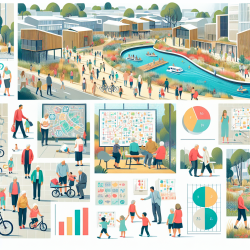Embracing NDE 4.0: A New Horizon for Speech-Language Pathologists
In the evolving landscape of speech-language pathology, the integration of advanced technologies is transforming how practitioners deliver therapy, particularly in online settings. The concept of NDE 4.0, as explored in the research paper "NDE 4.0—A Design Thinking Perspective," offers a framework that can significantly enhance therapeutic outcomes for children. This blog delves into how speech-language pathologists can harness the principles of NDE 4.0 to refine their practice and improve client outcomes.
Understanding NDE 4.0
NDE 4.0, or Non-Destructive Evaluation 4.0, represents the convergence of advanced digital technologies with traditional evaluation methods. This approach leverages data-driven insights and design thinking to optimize processes and outcomes. For speech-language pathologists, this translates into a more personalized, efficient, and effective therapy delivery model, especially in an online environment like that offered by TinyEYE.
Key Takeaways from the Research
- Data-Driven Insights: NDE 4.0 emphasizes the importance of collecting and analyzing data to inform decision-making. In speech-language pathology, this can mean using digital tools to track progress and adapt therapy plans based on real-time feedback.
- Design Thinking: The iterative process of empathizing with clients, defining challenges, ideating solutions, prototyping, and testing can lead to innovative therapy approaches tailored to individual needs.
- Enhanced Collaboration: By integrating technologies such as AI and machine learning, therapists can collaborate more effectively with colleagues and clients, sharing insights and strategies to enhance therapeutic outcomes.
Implementing NDE 4.0 in Practice
For speech-language pathologists, adopting NDE 4.0 involves a shift towards a more holistic, technology-driven approach to therapy. Here are some practical steps to integrate these principles into your practice:
- Leverage Digital Tools: Utilize platforms that offer data collection and analysis features to monitor client progress and adjust therapy plans accordingly.
- Engage in Continuous Learning: Stay informed about emerging technologies and how they can be applied to speech-language therapy. This includes participating in webinars, workshops, and professional networks focused on NDE 4.0.
- Foster a Collaborative Environment: Encourage open communication and collaboration among therapists, clients, and families to share insights and strategies that can enhance therapy outcomes.
Encouraging Further Research
While the principles of NDE 4.0 offer exciting possibilities for enhancing speech-language therapy, further research is essential to fully understand and optimize these technologies' potential. Practitioners are encouraged to engage in research initiatives, contribute to professional discussions, and share their findings with the broader community.
To read the original research paper, please follow this link: NDE 4.0—A Design Thinking Perspective.










